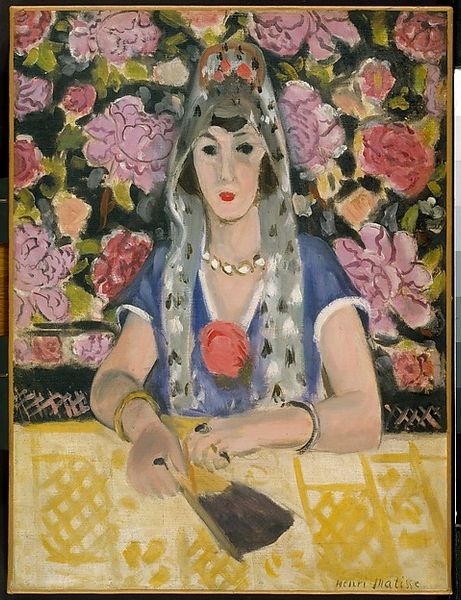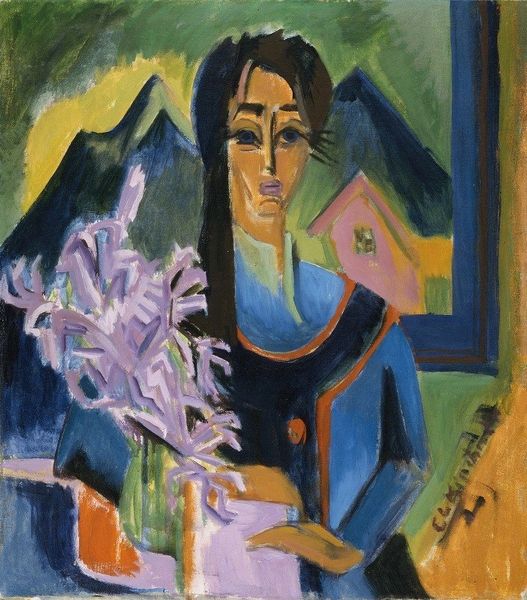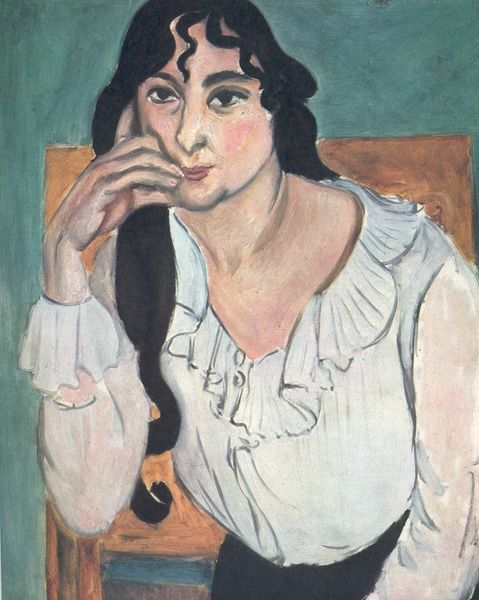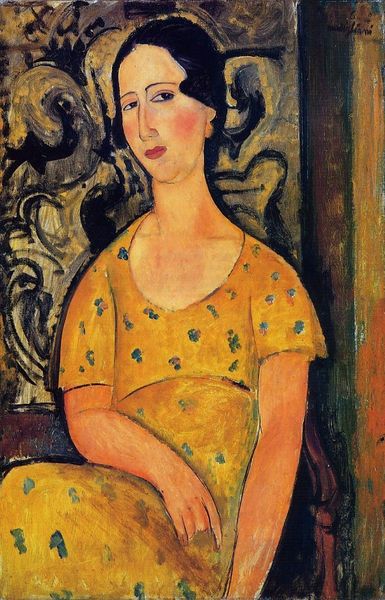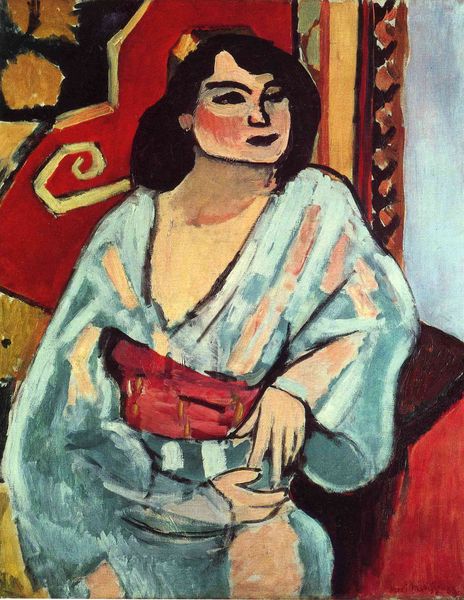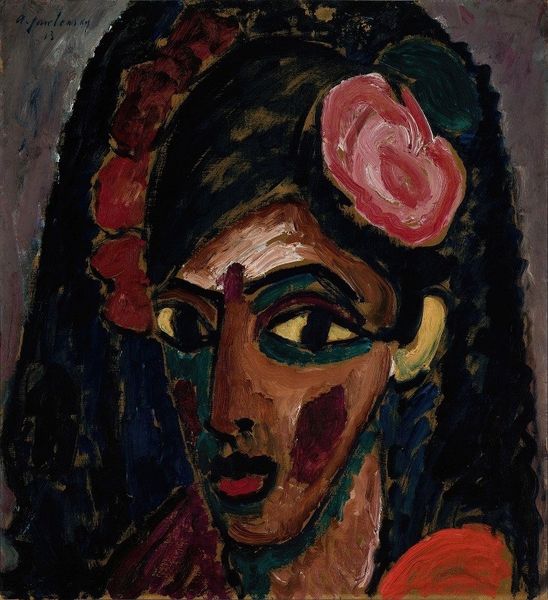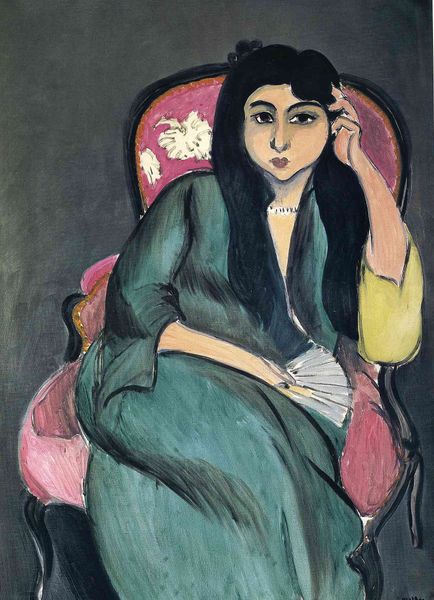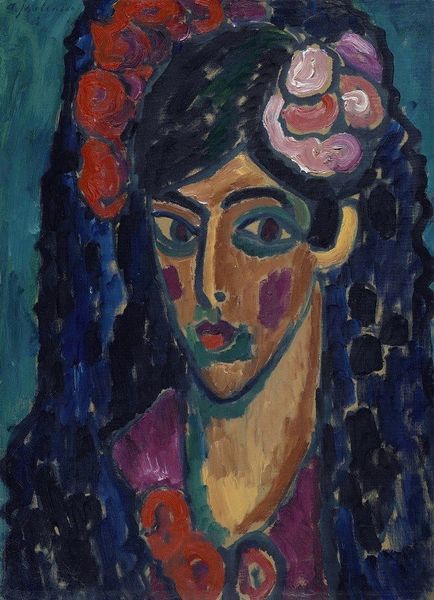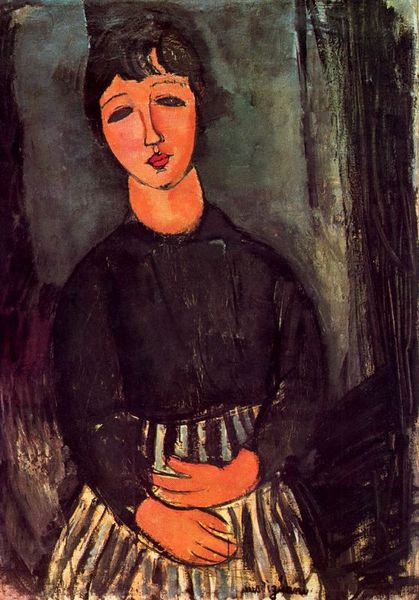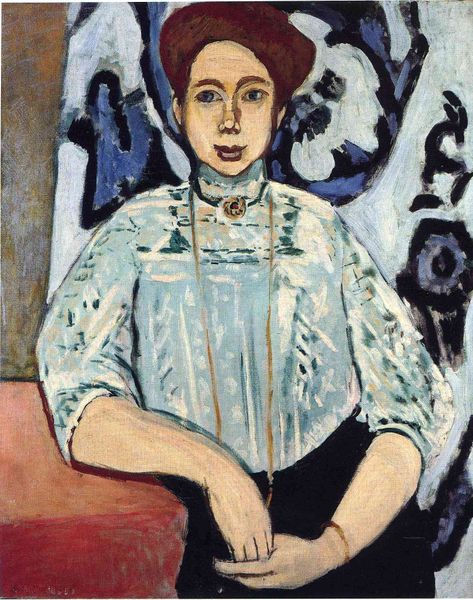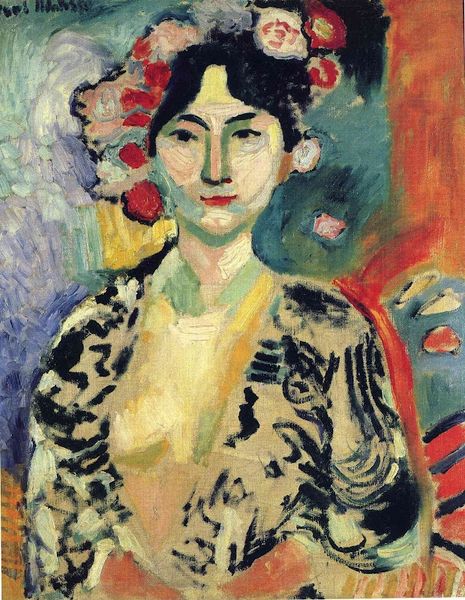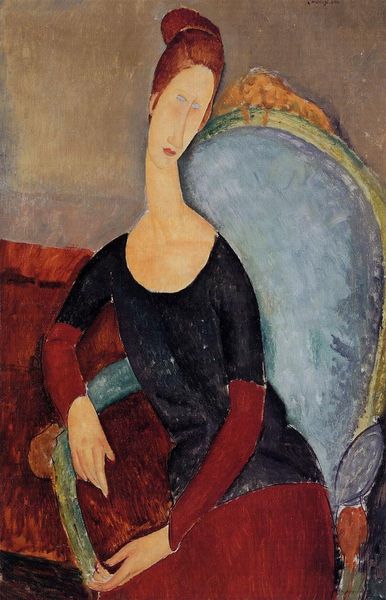
Copyright: Public domain US
Curator: Looking at this oil painting titled "Spanish woman: Harmony in Blue," painted by Henri Matisse in 1922, what are your immediate impressions? Editor: Well, first, the way Matisse contrasts that vivid red against all the blues really grabs my attention. It feels almost like he's deliberately playing with our expectations of "harmony." Also the flatness of the floral backdrop - such dense patterns! What was the cultural context surrounding Matisse at this time? Curator: At the time Matisse was working within the context of modernism. Fauvism, the art movement that he contributed so much to, was influencing the way painters were working and engaging with vibrant color palettes. Consider the portrait’s staging, for instance: it flattens out, challenging our conventional understandings of foreground and background, making the painting so distinctive. It draws viewers’ eyes. What can you tell us about its process and materiality? Editor: Right, so you notice, it’s not a smooth, blended finish, but rather distinct strokes, showcasing his method. It reveals, rather than conceals, the labor involved. Think about the actual process; oil paint is slow drying, allowing the artist to rework sections repeatedly. It makes you wonder about Matisse's process here and about the way art and society perceived portraiture at the time. Curator: And those textures! Considering that portraiture had always been for the upper classes to solidify and project social class, do you feel like it changed? This type of painting shifted towards the middle classes. Matisse democratizes painting as well by removing strict historical narrative and simply enjoying what we see here and now. Editor: I do think that changes the scope quite drastically. Plus the accessories - the bangles and fan give a lot more depth. They suggest commerce, perhaps travel, or certainly trade routes where the fan came from and who would use these kinds of fans and bangles. The context in which art appears becomes crucial here. I’m intrigued now by these objects and wonder if these were items of daily use. Curator: I concur that objects were also accessible for the upper middle classes too. Ultimately, a simple viewing gives way to questions. Editor: Absolutely. It reveals how embedded material culture is in portraiture as it represents the economic and cultural values of the person depicted, time period, and sometimes the society as a whole.
Comments
No comments
Be the first to comment and join the conversation on the ultimate creative platform.
